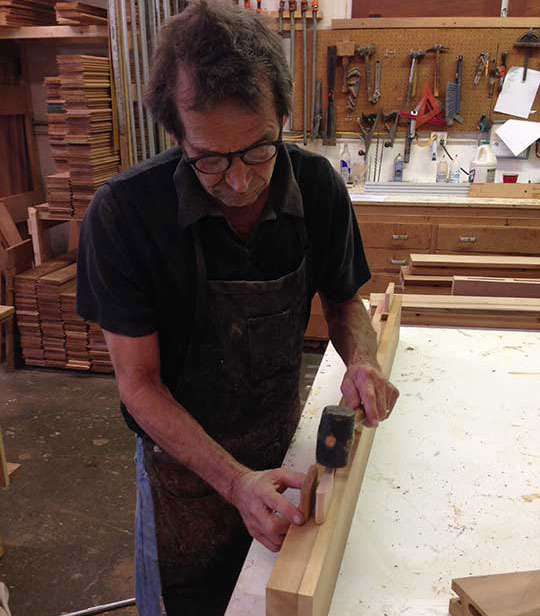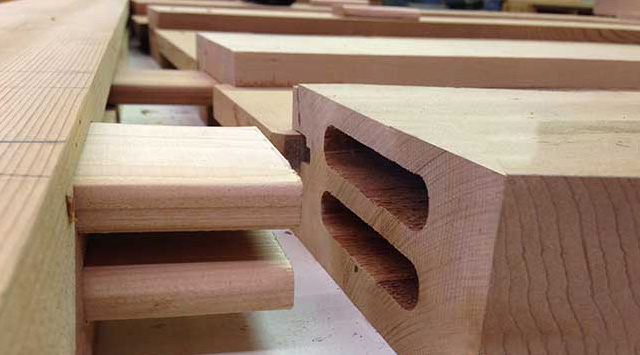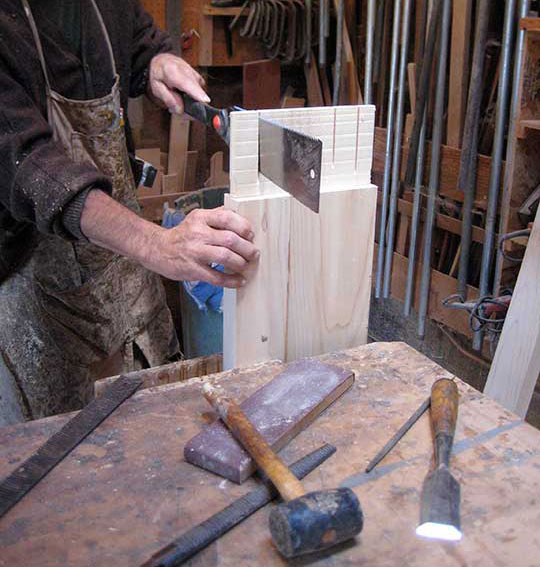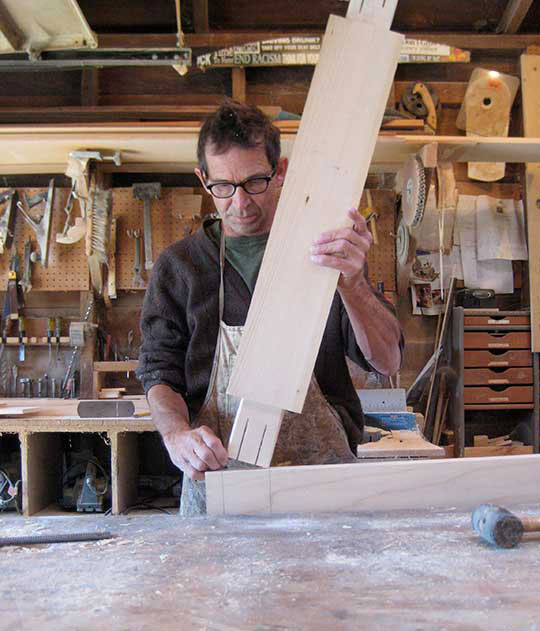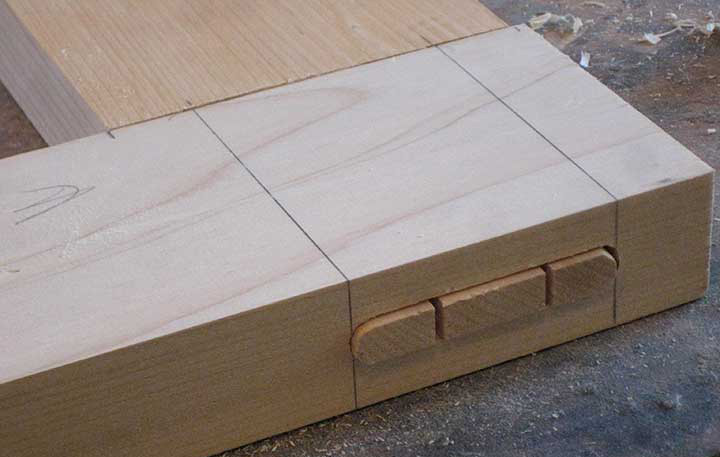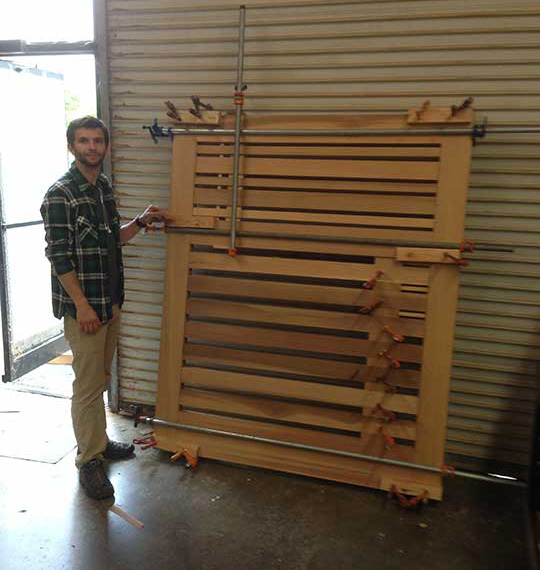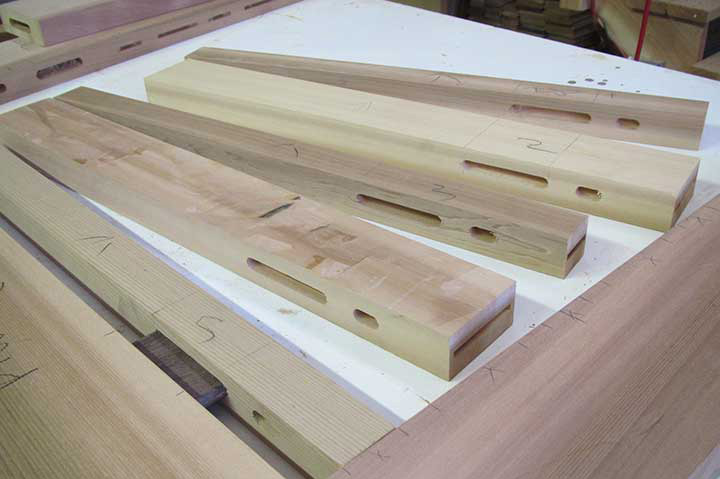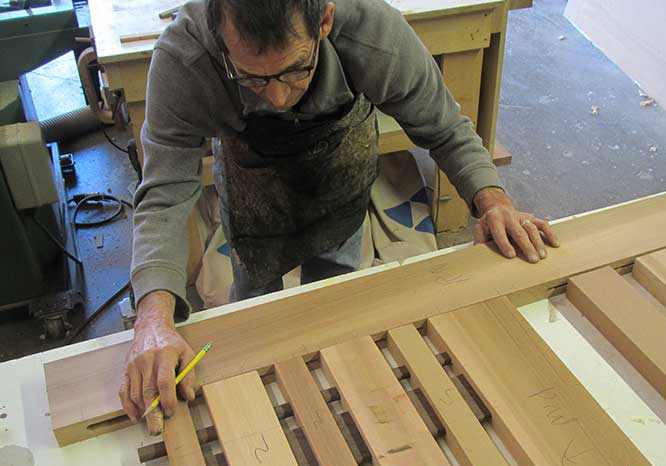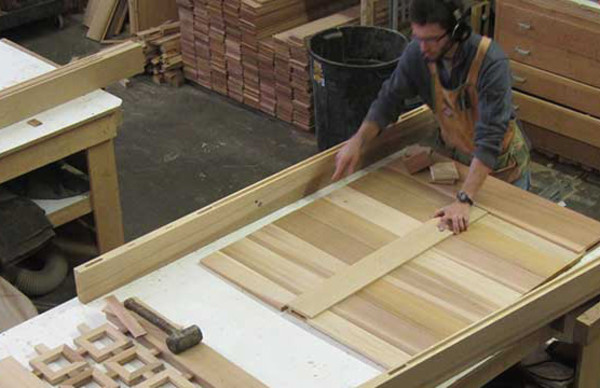
Ben Prowell dry-fits a gate prior to final glue-up.
Fine furniture (furniture designed and built to last generations) is built with wood joints. The same methodologies apply to the construction of gates and fences. The essential purpose of joinery is not only strength, but the flexibility of ensuring that the wood can breathe freely.
Joinery itself may bring up associations of complex schematics bordering on performance art. It is responsible, in its many variations, for the structural integrity of several 4th-century temples that survive to this day in Japan and Norway. An art form, certainly. And yet some of the more basic approaches in joinery, such as the (male) tenon fitted to the (female) mortise, provide both the strength and flexibility to support a gate from ever sagging . . . or a fence with the same life expectancy as the homeowner.
Whereas a nail or a screw or a lag bolt will provide a tight, snug joint initially, with every millimeter of subsequent movement, the grip of the fastener loosens, and once loosened, it will never return to its original fit. By contrast, joinery is a method of connecting intersecting planes in such a manner that all the components are organic to the assembly. The joint, as a whole, adjusts to changing seasons, and consequently maintains its original fit.
That explain mere functionality—but, of course, there’s more to it: the aesthetics. Consider the parameters of a design unencumbered by visual hardware and the limited methodology of fasteners. Joints allow us to design and build on a single plane, creating a visual economy by eliminating layers mounted to layers. An example: the slats of a swing or bench seat joined flush to the supporting framework, instead of screwed in place like decking. Another: the long span of a trellis designed on the strength of joinery to eliminate the need for muscular, oversized beams. Or: gates without diagonal bracing or tension cables, and fences identical on both faces.
Learning the basic dozen or so joints, their usefulness and appeal, expands the parameters of what can be designed. Learning to invent and modify known joints toward your own applications expands the possibilities even further.
Double Floating Tenon
A simple double floating tenon shoulders the load on the top joint in a 6′-wide gate at 2-1/4″ thickness. To ensure effective service, floating tenons must be tight enough they require tapping into place. A double tenon not only doubles the glue mass, but also the shoulder area. It must be cut, whether by hand or on a mortiser, to an aligned depth and height, lest you’re wrestling the fit.
Wedged Tenon Joint
The simple tenon, an extension of the rail itself, is 5 1/4” long x 5/8” thick. The two kerfs will accept two corresponding bubinga wedges. (Bubinga is a dense African species resistant to decay.) The kerfs are to prevent the wedges from splitting—thus weakening—the tenon. Once inserted, the tenon expands tight against the shoulders of the mortise. The wood at this juncture is dry, with a 7 percent moisture reading. When the joint is exposed to the elements, it will absorb moisture from their air, and with that absorption comes expanding wood. Expansion will cause the joints to become tighter and tighter. With the dry season, the joint shrinks back to its original tight fit, created in the shop decades earlier.
Horizontal Gate
In this version, width really matters. In a 60”-wide gate, without the introduction of continuous tenon joinery, horizontal rails would surely misbehave—warping, bowing, and wobbling. To prevent this, a set of dual through tenons is introduced, carrying through the horizontal rails and mortised to the top and middle rails. The horizontal boards are still able to move from season to season, but are strengthened by this unique solution. Joinery works best when it serves to stretch the functionality of the design.



